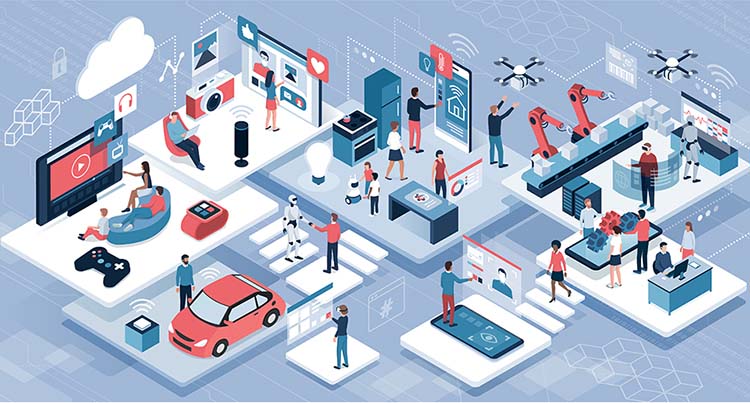5G is the promise of new technical standards, not just the further development of faster mobile communication technology. Changes will take place in many fields such as digitalization, society and economy. So far, the main purpose is to expand the infrastructure conditions of the traditional network across the board to ensure the network availability of all mobile devices. In the next few years, in addition to the continuous networking in 5G internet of things, the focus will also be on better than ever to meet the ever-increasing needs of the network society.
5G IoT-Unlimited connection to the future of the network
The global data volume of 5G is constantly increasing, making 5G indispensable. Due to the advent of the era of big data, existing technologies will no longer meet the requirements of the IoT world. China is a good example of data volume development. In 2017, China's data volume reached 1 billion gigabytes, twice the amount in 2015. Experts based on such findings, by 2021, the number of global Internet of Things will be between 5 and 500 billion.
This provides great potential for our global economy because it proves the necessity of 5G networks: only with the help of 5G can such a high amount of data be combined with the number of IoT devices and the individual needs of IoT networks.
Since the so-called "3G" cellular standard cannot meet the needs of video transmission, the fourth-generation mobile network standard was created. Thanks to "LTE", the data transmission rate has been greatly increased. Until today LTE is the most popular and unified network. For the network, the speed of up to 100 megabits per second is no problem, and it has become a reality in many fields of economy and society. It is even possible to modify the LTE bandwidth to eventually reach download speeds of "up to 4000 megabits per second". However, the future LTE is not enough to meet the standards and expectations of new technologies. LTE was originally designed and optimized for smart phones, and 5G will become the mobile standard for all Internet of Things.
Internet of things has reached new heights in all aspects. The data throughput in the new network should reach 20 bytes per second and allow for shorter response times. In contrast, the first mobile phone with 1G network connection is 8 million times less. The use of 5G not only spreads a large amount of data, but can also transmit data in real time. This means that it will be able to access 100 billion mobile devices worldwide at the same time. In other words, the connection density is approximately one million devices per square kilometer. At the same time, new technologies have brought about an increase in relative movement speed. This means that at a top speed of 500 kilometers per hour, the connection quality will be more stable, which will bring huge benefits, especially for railway passengers. Regardless of the smart phone, it is inevitable to increase the amount of data in other application areas. These numbers not only sound great, but they are actually great. For these reasons and many other reasons, 5G IoT will become a key technology for new connections.
The application fields of 5G are diverse and innovative
In addition to the Internet of Things, Industry 4.0 will also benefit a lot from 5G technology. The continuous data exchange between machines, systems, robots and people will become an integral part of industrial production. The number of connected devices and components will greatly increase. For example, the control unit of an industrial robot is addressed and restored to a minimum in real time.
For example, driverless courier services will therefore be able to always pick up goods on time at the machine's loading and unloading points. There are also many examples in the industry showing how to use 5G to optimize operational processes. New technology brings unprecedented opportunities and ideas, because it was technically impossible before.
These ideas and opportunities are also being adapted to other economic sectors. For example, agriculture with so-called smart agriculture. As numbers, data and analysis are related to animal health, data on weeds or pests, or moisture in any soil can be transmitted. Such intelligent networks will grow exponentially and mature in the future. With the connection of the 5G Internet of Things, traditional agriculture has not been able to do things created by smart farming, creating a greater degree of ecology while increasing the efficiency of food production.
5G will greatly promote connectivity in the digital environment
The digital transformation in the field of network connectivity has become obvious, and the potential has been clearly defined. Based on the impressive numbers about bandwidth or device density in 5G networks, the impression is that connectivity has reached its maximum potential. Well-functioning connectivity is the most important foundation for setting up large and small IoT networks. With the help of 5G technology, there may be ideas, methods and measures that no one in the world has ever thought of. This may be due to the fact that countless new business ideas have been introduced to the market with the help of 5G connections, continuing to innovate our digital world. It remains to be seen when 5G technology will reach market maturity. But one thing is certain: the technology is effective and the world is ready for another leap in the digital future.




















